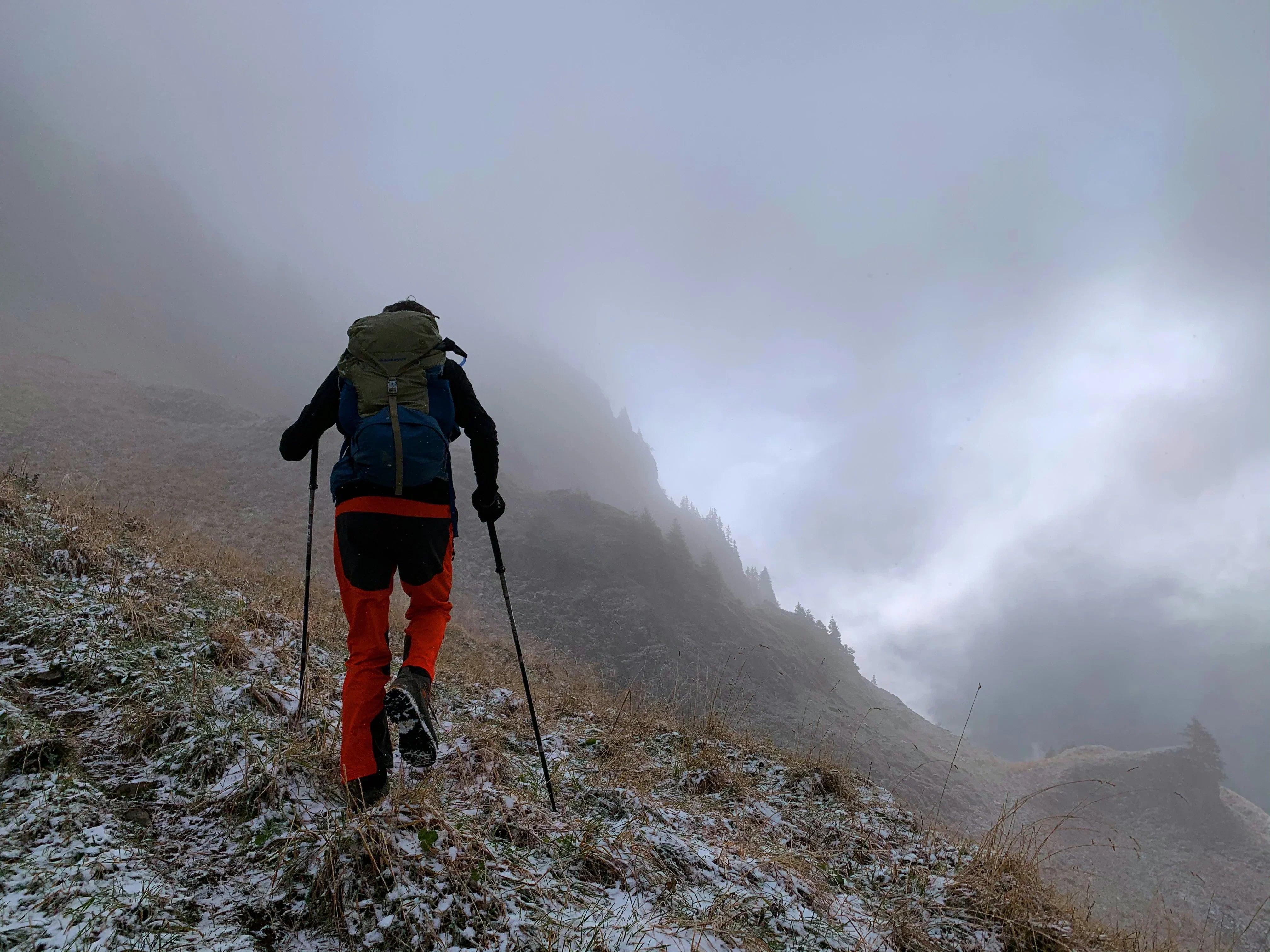
Hiking with Poles: Technique, Benefits & the Right Equipment
Hiking with poles provides noticeable relief for your knees and back, adds stability on slippery terrain, and saves energy on both ascents and descents – as long as the length, technique, and materials are right. This guide offers a practical, hands-on introduction.
Why should you hike with poles?
Anyone who’s ever been on a long hike knows that proper pole technique makes all the difference. Your joints and muscles tire more slowly — especially noticeable on descents. Poles also help you maintain balance and keep a steady rhythm.
The benefits at a glance:
- Up to 20–30% less strain on knees and ankles
- More stability on roots, gravel, snow, and slippery terrain
- More efficient propulsion as your arms actively assist
- More even load distribution on your back when carrying heavy gear
Discover our hiking products now!
The right pole length
The length of your trekking poles is crucial for maintaining proper posture. A good rule of thumb is: your height × 0.68. An easier way to check: place the pole next to your body — your elbow should form a 90° angle.
- Uphill: shorten the poles by about 5 cm
- Downhill: lengthen them by 5–10 cm
- Traversing slopes: shorten the uphill pole and lengthen the downhill one
Material & built
Trekking poles differ mainly in their material and design. Aluminum poles are durable and long-lasting, while carbon poles are especially lightweight and absorb vibrations well. When it comes to construction, you can choose between:
- Telescopic poles with 2–3 segments – adjustable and flexible
- Folding poles – ultra-compact, ideal for travel and trail running
For the grips, you can choose between cork (good grip, sweat-absorbing), foam (lightweight and soft), and rubber (warmer but less breathable). The straps should be properly adjusted so they can take part of the load off your hands.
Hiking with SKINHAWK – Hiking poles & supplies
At SKINHAWK, you’ll find everything you need for your next hike: lightweight, durable trekking poles with adjustable length, non-slip cork grips, and reliable clamp locks. The range also includes baskets, rubber tips, and spare parts. All models are field-tested and provide stability on any terrain – whether it’s a day hike, hut-to-hut trek, or an Alpine crossing.
Technique: How to use hiking poles
The basic technique follows your natural walking motion: your right pole moves with your left leg, and vice versa. Place the pole tips slightly behind your center of gravity and push back actively.
When going uphill, shorten the poles and keep them close to your body. This supports your leg muscles and saves energy. On steep steps, plant both poles just in front of your feet and push yourself upward.
When descending, lengthen the poles slightly, place them in front of your body, and transfer your weight through the straps — this significantly reduces strain on your knees. In very steep terrain, the double-pole technique has proven particularly effective.
Tips, baskets & pole caps
Often overlooked, but essential: the accessories.
- Carbide tips provide grip on dirt, mud, and ice.
- Rubber caps are perfect for asphalt or rocky surfaces.
- Baskets prevent the poles from sinking into snow or soft ground.
Avoiding common mistakes
A common mistake is using the wrong pole length: poles that are too long cause raised shoulders, while poles that are too short lead to a rounded back. Setting the poles too far from your body also breaks your rhythm. Make sure to use the straps correctly — many hikers skip them and waste valuable energy. And remember: poles don’t replace proper hand support — on via ferratas, they belong in your backpack.
Care & safety
To keep your poles in good condition, clean off sand and dirt after each hike and store them dry. Clamp locks benefit from occasional cleaning and a light layer of grease. Check carbon models regularly for cracks, and replace aluminum segments if necessary.
Who should use trekking poles?
Those who benefit the most include:
- Hikers with sensitive knees or previous injuries
- Trekkers carrying a heavy backpack
- Anyone frequently hiking in alpine or rocky terrain
- Beginners looking for extra stability and confidence
Discover the hiking poles from SKINHAWK >
Conclusion
Hiking with poles makes your hikes more efficient, protects your joints, and increases safety. Once you set the right length, practice proper technique, and use the right accessories, you’ll quickly realize that poles are indispensable on long treks.

